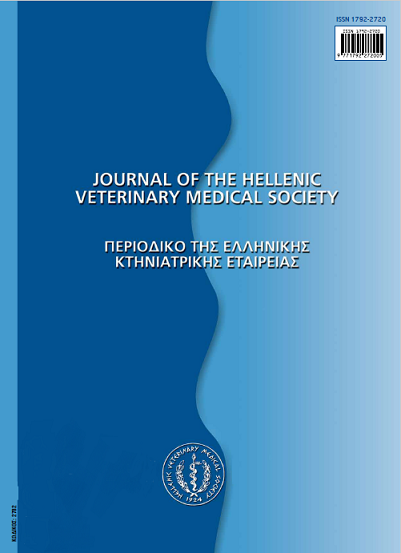The diagnostic approach to anaemia in the dog and cat
Résumé
The term anaemia indicates a pathologic condition characterized by a decreased concentration of hemoglobin (Hb) in blood, usually associated with a decreased number of erythrocytes (RBC) and/or of hematocrit (Ht). Anaemia depends on two pathogenic mechanisms: 1) decreased RBC production due toxic, infectious or idiopathic bone marrow diseases or to metabolic, neoplastic or infectious diseases that secondarily affect erythropoiesis, leading to the so-called “non regenerative anaemia”, on which no reticulocytes are released in blood from bone marrow; 2) decreased lifespan of mature RBC due to acute blood loss or hemolysis that leads to “regenerative anaemia” in which reticulocytes are released in blood as an attempt to restore the RBC mass. A stepwise diagnostic approach to anaemic dogs and cats may allow first to identify which of the two mechanisms is involved in the pathogenesis of anaemia, then to identify the possible cause of decreased RBC production or of decreased RBC lifespan. This approach must include clinical data, information regarding gross appearance of the sample, actual values of RBC counts, Ht and Hb concentration, RBC indexes (MCV, MCH, MCHC, RDW) and the magnitude of the reticulocyte response. Morphology of blood cells and additional laboratory tests may further address the diagnosis. With rare exceptions, non regenerative anaemia is normocytic normochromic,
while regenerative anaemia is macrocytic hypochromic and characterized by anisocytosis and polychromasia, since reticulocytes are larger and have less Hb than mature RBC. However, blood loss or hemolytic anaemia are initially “pre-regenerative” (normocytic and normochromic), then they shift to the macrocytic hypochromic pattern in a few days, when reticulocytosis becomes relevant. Microcytic hypochromic anaemia is usually associated with iron deficiency. Once anaemia is classified into one of the categories listed above, morphology of RBC may suggest the possible cause, especially in regenerative anaemia, when the shape of RBC may be consistent with oxidative damage (eccentrocytes, Heinz bodies), immune-mediated mechanisms (agglutination, spherocytes, schistocytes, etc) or infectious diseases (e.g. mycoplasmosis, babesiosis). If needed, bone marrow cytology, Coomb’s test or flow cytometric detection of anti-RBC antibodies, coagulation profiles or additional biochemical or serological tests may be used to finalize the diagnostic approach.
Article Details
- Comment citer
-
PALTRINIERI, S. (2017). The diagnostic approach to anaemia in the dog and cat. Journal of the Hellenic Veterinary Medical Society, 65(3), 149–164. https://doi.org/10.12681/jhvms.15529
- Numéro
- Vol. 65 No 3 (2014)
- Rubrique
- Review Articles
Authors who publish with this journal agree to the following terms:
· Authors retain copyright and grant the journal right of first publication with the work simultaneously licensed under a Creative Commons Attribution Non-Commercial License that allows others to share the work with an acknowledgement of the work's authorship and initial publication in this journal.
· Authors are able to enter into separate, additional contractual arrangements for the non-exclusive distribution of the journal's published version of the work (e.g. post it to an institutional repository or publish it in a book), with an acknowledgement of its initial publication in this journal.
· Authors are permitted and encouraged to post their work online (preferably in institutional repositories or on their website) prior to and during the submission process, as it can lead to productive exchanges, as well as earlier and greater citation of published work.



